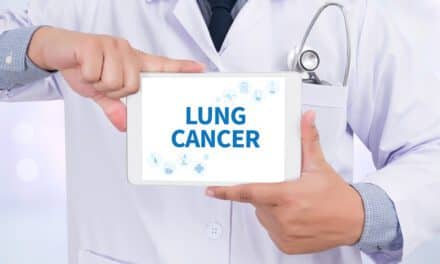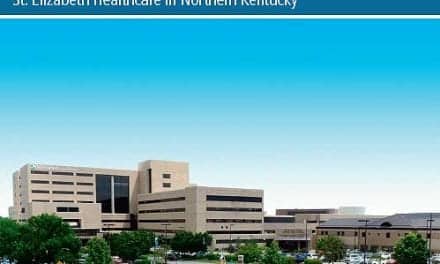
Barry D. Pressman, MD, FACR
When a patient comes to a hospital for treatment, the last thing the provider wants is to unnecessarily harm her. Whether it’s a nosocomial infection, improper scan or treatment, or simply forgetting about a patient as she waits on a stretcher in the hall, all of these factors can contribute to an unpleasant and possibly unsafe situation for patients. Barry D. Pressman, MD, FACR, professor and chairman of the S. Mark Taper Foundation Imaging Center and Department, and chief of the Section of Neuroradiology and Head and Neck Radiology at Cedars-Sinai Medical Center, Los Angeles, who has spent 30 years at Cedars-Sinai, is well aware of these potential safety issues and made it a point to improve the safety standards and culture at his facility.
“Safety has always been a priority and we’re always working on safety, but we went into a department-wide change to the culture about a year ago and made sure that safety is number one,” Pressman said.
After addressing a few minor safety issues in the Cedars-Sinai radiology department and considering the growing concerns about safety in the field in general, Pressman and a number of leaders in the hospital set out to make safety a key focus in their department. First, however, they needed to determine and agree that safety was an integral issue that needed this dedicated attention. After some discussions, it was established that a strategic plan was necessary to change the culture of the radiology department.
Evaluating a Model Program
“The next step was to identify a good training program for the leadership of the department. So we identified a program at [Johns Hopkins Hospital, Baltimore,] where six of us went to learn their methods,” Pressman said. “It was a 3-day program. Myself, the administrative director, two physicians—one of whom was my safety officer and one from the nuclear medicine section so we had a spread of physicians—our nonphysician safety officer, and a line tech. We wanted all perspectives; we wanted to bring a nurse but it didn’t work out.
“We had two or three primary goals. One was to introduce us to what Hopkins had done over the last—approximately—decade since having had two major safety issues that had them look up and pay attention. Second, to help us try to relate their safety plan and program to our needs. Third, to develop a strategic plan—or at least the outlines of a strategic plan—that we could refine when we came back home for changing the culture in our department toward improving safety and, most importantly, making safety a very high priority.”
After evaluating and learning from the foundational program at Hopkins, Pressman and the safety committee addressed the staff with a safety survey that asked two important questions, among many others: “How will we hurt the next person in our department or section?” and “How can we prevent it?” Although most results were positive, the safety committee still received some discouraging responses, but those answers helped the facility further expand and improve its safety culture.
Since then, the safety program at Cedars-Sinai has implemented a number of tools to ensure the safety of both patients and staff. First, Pressman and the safety committee review all entries on their internal MIDAS (Medical Information Data Analysis System) reports, which track every negative incident in the department. In these reports, the safety committee searches for trends that can be corrected or avoided. In a similar approach, the committee took applications for safety ambassador positions in each department, who are tasked with looking out for problems and addressing them before they occur. In addition, an e-mail system that generates imaging quality improvement reports allows staff members to e-mail concerns or problems to the safety committee to be reviewed at monthly meetings.
Most of the changes that came with the safety program were largely information-based, including human interaction with information. The safety program aims to remove human error in transcription by necessitating that original patient orders be scanned directly into the facility’s PACS and RIS systems, which removes one human-driven step where problems can arise.
Motivating the Staff
Before any of these cultural changes could really take hold, however, Pressman and the safety committee had to get the entire staff on board, which wasn’t always an easy task. The staff was initially skeptical that this was simply an initiative to force them to be more productive, rather than truly improve patient care and safety.
“Some of the techs were concerned at first that this was a way to try to get more work out of them,” Pressman said. “We had to explain that we’re not trying to get you to be more productive. What we’re trying to do is get you to be more safety productive. It doesn’t do us any good if you turn around the patient quickly and you hurt them.

Clinicians and technologists at S. Mark Taper Foundation Imaging Center at Cedars-Sinai are committed to a safety initiative that is improving patient satisfaction.
“I think that now you’ll find that we really did change the culture. People realize that what we’re trying to do is help our patients get home as safely as they got here. Second, it helps the staff do a better job so that they can feel better about themselves.”
That positive feeling among the staff is not a fluke, and Pressman and the safety committee hope that it continues to be an added benefit of the program. As the program progresses, the committee will continue to meet regularly to address any concerns that arise, review MIDAS reports, and continue to ensure that the culture around the department truly has changed.
The facility has experienced one immediate area of improvement—patient satisfaction reports—and the team is proud of that fact. Since instituting the safety program, patient satisfaction has skyrocketed. Most recently, the department’s March 2012 reports showed overwhelmingly positive responses in patient experiences in all modalities, from cardiac CT and mammography to MRI, PET, and ultrasound, among a host of others. Of the modalities offered, more than 95% of patients would recommend the imaging center to friends and family.
Although the early returns—these improved patient satisfaction reports in addition to a reduced number of negative MIDAS reports and imaging quality improvement reports—have been positive, this initiative is an ongoing process to ensure the safety of all patients and staff. The safety committee recently issued a second safety survey to the staff to see how the staff culture has changed.
“One of the questions on the survey is ‘Would you have a study done in your section?'” Pressman said. “On the first survey, there were some areas where the majority of the people felt safe everywhere, but there were some areas where there were more negatives than we wanted to see. Now we’ll see what’s happened. We’ll see if it’s changed people.”
If the patient reports and all other evidence are to be believed, the answers on this staff survey should be resoundingly positive.






